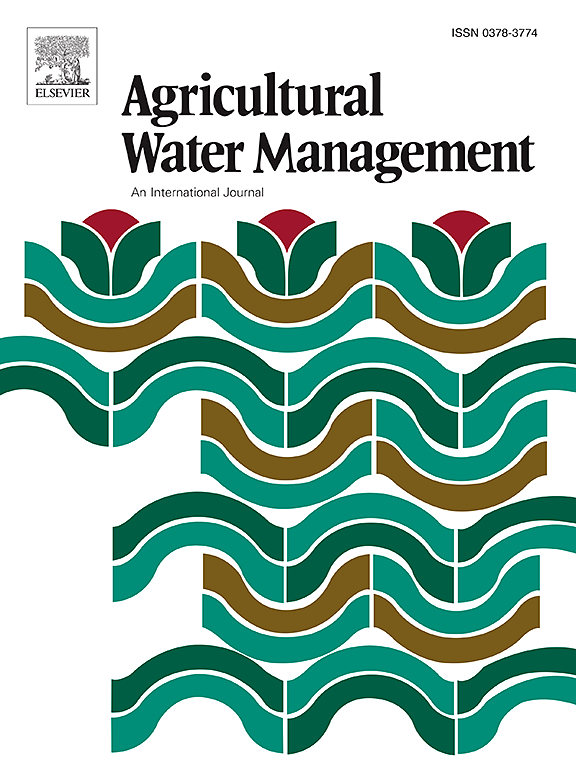Irrigation monitoring from satellite at hyper-high resolution: Paving the way for remote-sensing-based agricultural water management support services
IF 6.5
1区 农林科学
Q1 AGRONOMY
引用次数: 0
Abstract
Recent advances in satellite retrievals of key hydrological variables have fostered the development of approaches for tracking the irrigation footprint on water resources. Nevertheless, constraints due to the native spatial and temporal resolutions of remotely sensed data still limit the building of supporting systems for agricultural water management relying on Earth Observation. This work aims at filling this gap by applying well-established irrigation mapping and quantification techniques with multiresolution satellite data as input to reproduce irrigation dynamics at the unprecedented spatial sampling of 10 m. Results are validated across different scales of interest for water allocation managers, i.e., from the consortium to the single farm level. The irrigation quantification experiment, carried out through the SM-based (Soil-Moisture-based) inversion approach, provides satisfactory results especially in light of the scarcity of ancillary information for refining the estimates. Percentage errors aggregated at the consortium and the farm scales equal to −24 % and to −14 %, respectively, are found. Such results are achieved without considering losses due to irrigation efficiency, as this information is not explicitly available. The irrigation mapping experiment, carried out by leveraging the TSIMAP (Temporal Stability derived Irrigation MAPping) method, is validated at the farm scale only. An overall accuracy of 93 % is reached, corresponding to two agricultural fields misreproduced as non-irrigated out of the total number equal to twenty-eight. The outcomes of this study show the potential of hyper-high resolution implementations of the considered irrigation mapping and quantification techniques for supporting agricultural water managers, highlighting improvements needed to further meet potential users’ requirements.
超高分辨率卫星灌溉监测:为基于遥感的农业水管理支助服务铺平道路
最近在卫星检索关键水文变量方面取得的进展促进了跟踪水资源灌溉足迹的方法的发展。然而,由于遥感数据本身的时空分辨率的限制,仍然限制了基于对地观测的农业水资源管理配套系统的建设。这项工作旨在通过应用完善的灌溉制图和定量技术,以多分辨率卫星数据为输入,在前所未有的10 m空间采样下重现灌溉动态,从而填补这一空白。结果在水资源分配管理者的不同兴趣尺度上得到验证,即从财团到单个农场水平。通过sm (soil - -based)反演方法进行的灌溉量化试验,特别是在辅助信息匮乏的情况下,获得了令人满意的结果。在联盟和农场规模上汇总的百分比误差分别为- 24 %和- 14 %。这些结果是在没有考虑灌溉效率造成的损失的情况下获得的,因为这方面的信息并不明确。利用TSIMAP(时间稳定性衍生灌溉制图)方法进行的灌溉制图试验仅在农场规模上进行了验证。总体精度达到了93 %,相当于在总数为28个的农田中,有两个农田被错误地复制为非灌溉。这项研究的结果显示了超高分辨率灌溉制图和量化技术在支持农业水资源管理方面的潜力,强调了进一步满足潜在用户需求所需的改进。
本文章由计算机程序翻译,如有差异,请以英文原文为准。
求助全文
约1分钟内获得全文
求助全文
来源期刊

Agricultural Water Management
农林科学-农艺学
CiteScore
12.10
自引率
14.90%
发文量
648
审稿时长
4.9 months
期刊介绍:
Agricultural Water Management publishes papers of international significance relating to the science, economics, and policy of agricultural water management. In all cases, manuscripts must address implications and provide insight regarding agricultural water management.
 求助内容:
求助内容: 应助结果提醒方式:
应助结果提醒方式:


